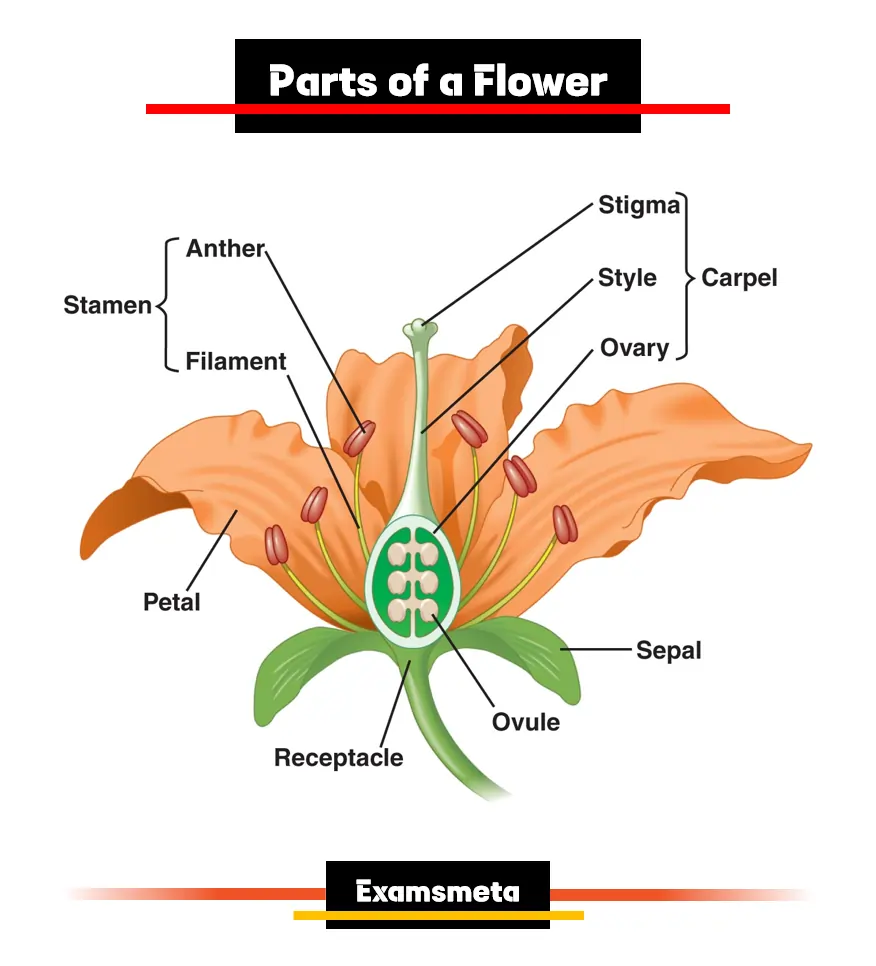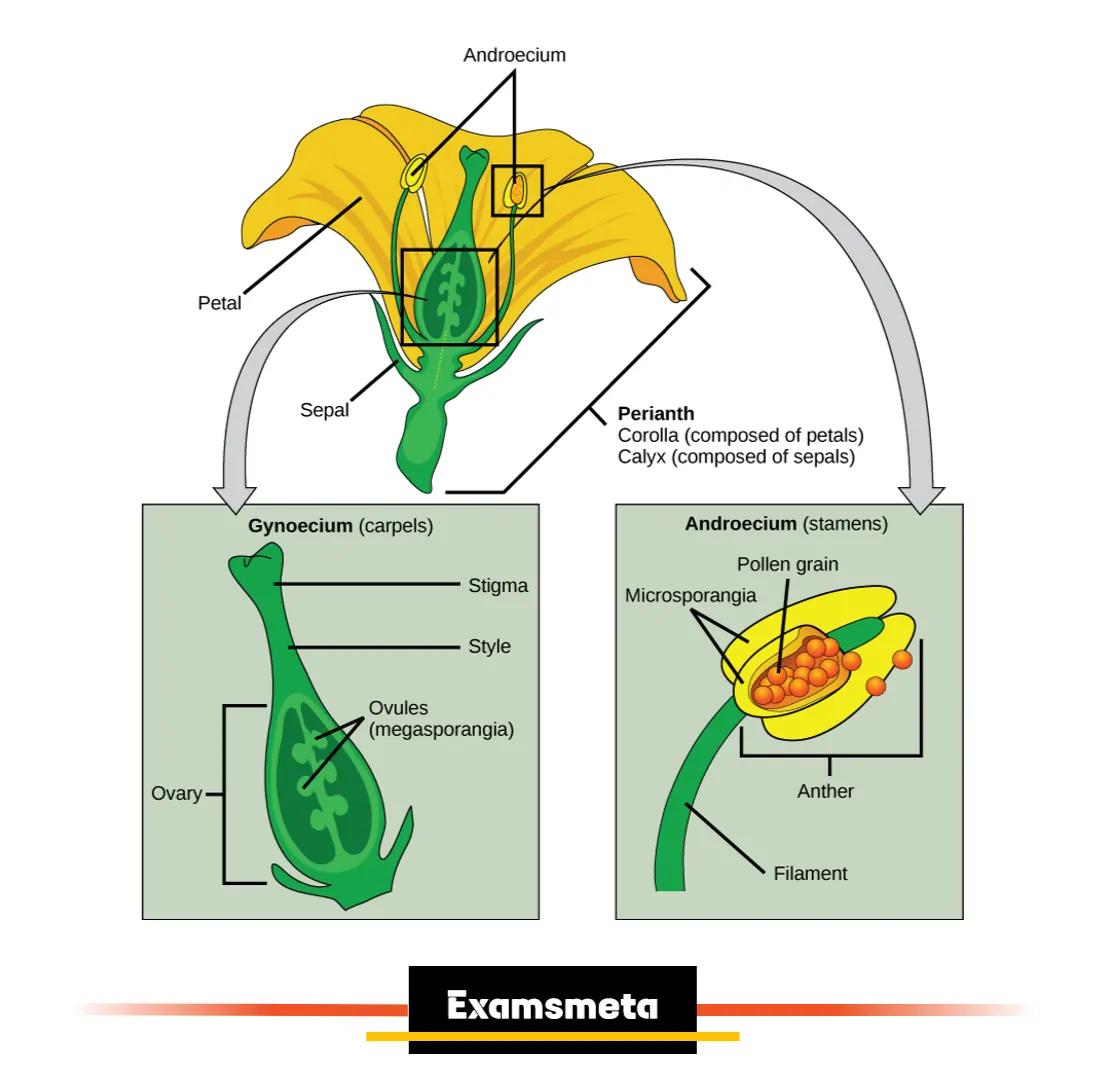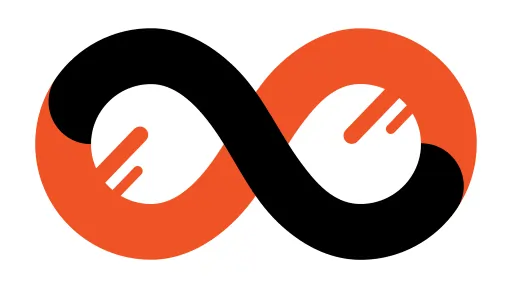In the vibrant world of flowering plants, the gynoecium stands as the cornerstone of female reproduction, orchestrating the creation of seeds and fruits that ensure the survival of plant species. Positioned at the heart of the flower, the gynoecium is the innermost whorl, responsible for producing ovules, the female gametes that, upon fertilization, develop into seeds. This intricate structure not only facilitates reproduction but also plays a pivotal role in the evolutionary adaptability of plants.
This article provides an in-depth exploration of the gynoecium’s definition, structure, components, functions, and classifications, enriched with examples and detailed insights into its significance in the plant kingdom.
Table of Contents
Defining the Gynoecium: The Female Reproductive Hub
The gynoecium is the female reproductive organ of a flower, often referred to as the pistil or carpel system, located at the center of the floral structure. It is the final whorl in a flower’s arrangement, following the calyx (sepals), corolla (petals), and androecium (stamens). The gynoecium’s primary role is to produce ovules, which contain the female gametophytes essential for fertilization. After successful pollination and fertilization, the ovules mature into seeds, and the surrounding ovary develops into a fruit, ensuring the dispersal and continuation of the plant species.

The gynoecium’s significance extends beyond reproduction. By facilitating sexual reproduction it enables genetic recombination, which introduces variations critical for plants to adapt to changing environments. For instance, in plants like tomatoes, the gynoecium’s efficient structure ensures that pollen from the androecium or another flower results in robust seed production, contributing to both agricultural yield and genetic diversity.
Structure of the Gynoecium: Components and Organization
The gynoecium is a complex structure composed of one or more carpels, which are the basic units of the female reproductive system. A carpel is a modified leaf-like structure that encloses the ovules and consists of three primary components: the stigma, style, and ovary. These parts work in concert to capture pollen, guide male gametes to the ovules, and nurture the developing seeds. Below is a detailed examination of each component.

Stigma: The Pollen Receptor
The stigma is the topmost part of the gynoecium, designed to capture pollen grains from the environment or pollinators. Its surface is often sticky or covered with hair-like structures, providing an ideal landing platform for pollen. The stigma’s role is critical during pollination, as it not only traps pollen but also discriminates between compatible and incompatible grains. For example, in roses, the stigma’s sticky surface ensures that only pollen from the same species initiates fertilization, preventing wasteful germination of foreign pollen.
The stigma contains nutrient-rich tissues that support the growth of pollen tubes, which transport male gametes toward the ovules. Its selective mechanism involves chemical barriers that dissolve incompatible pollen, ensuring reproductive efficiency. This specificity is vital for plants like strawberries, where the stigma’s precise recognition enhances successful fertilization.
Style: The Pathway for Pollen Tubes
The style is a slender, stalk-like structure that connects the stigma to the ovary, serving as a conduit for pollen tubes. After pollen lands on the stigma, it germinates, forming a pollen tube that grows through the style to reach the ovules in the ovary. The style’s internal environment tests the compatibility of pollen, allowing only suitable pollen tubes to continue their journey. In plants like peas, the style’s length and structure ensure that only viable pollen tubes reach the ovary, optimizing fertilization.
The style also provides structural support, elevating the stigma to a position where it can effectively interact with pollinators or environmental factors like wind. Its role in guiding male gametes is crucial, as seen in tulips, where the style’s nutrient-rich tissues nourish the growing pollen tube, ensuring successful fertilization.
Ovary: The Seed Factory
The ovary is the enlarged basal part of the gynoecium, housing the ovules, which are the female gametes or megasporangia. The ovary’s primary function is to protect and nourish the ovules, which develop into seeds upon fertilization. The ovules are attached to the ovary’s inner wall via a structure called the funicle, which supplies nutrients to the developing embryo through the placenta. In plants like mustard, the ovary’s robust structure supports multiple ovules, leading to the formation of numerous seeds.
After fertilization, the ovary matures into a fruit, which aids in seed dispersal. The absence of an ovary renders a flower sterile, as seen in some cases of parthenogenetic gynoecia, where reproduction occurs without fertilization. The ovary’s role is exemplified in peaches, where a single ovary develops into a juicy fruit containing a single seed.
Functions of the Gynoecium
The gynoecium performs several critical functions that drive plant reproduction and ensure species continuity. These functions are intricately linked to its components and their interactions with the androecium and pollinators. Below are the primary functions of the gynoecium:
1. Pollen Capture and Selection
The stigma captures pollen grains and selectively allows germination of compatible pollen. Its sticky or hairy surface ensures pollen adhesion, while chemical mechanisms prevent the germination of pollen from different species. This selective process, seen in buttercups, enhances reproductive success by ensuring only suitable male gametes initiate fertilization.
2. Pollen Tube Guidance
The style serves as a pathway for pollen tubes, guiding male gametes from the stigma to the ovules in the ovary. It tests pollen compatibility, halting the growth of incompatible tubes. In china roses, the style’s nutrient-rich environment supports pollen tube growth, ensuring efficient delivery of male gametes.
3. Ovule Production and Protection
The ovary produces ovules, which contain the female gametophytes. It protects these gametes and provides nourishment via the funicle and placenta. Post-fertilization, ovules develop into seeds, as seen in tomatoes, where the ovary’s multiple ovules result in a fruit packed with seeds.
4. Fruit Formation
Following fertilization, the ovary matures into a fruit, which encases the seeds and aids in their dispersal. This transformation is critical for plant propagation, as fruits attract animals or utilize environmental factors for seed spread. For example, in avocados, the ovary develops into a nutrient-rich fruit that supports seed dispersal by animals.
5. Genetic Diversity
By facilitating sexual reproduction, the gynoecium promotes genetic diversity through cross-pollination and fertilization. This diversity enhances a plant’s adaptability to environmental changes, as observed in lotuses, where the gynoecium’s structure supports cross-pollination, leading to genetically varied offspring.
Classification of Flowers Based on Gynoecium
The gynoecium’s structure and arrangement provide a basis for classifying flowers, reflecting their reproductive strategies and evolutionary adaptations. These classifications are based on the number and fusion of carpels, the ovary’s position, and the number of chambers within the ovary.
Based on Carpel Arrangement
- Monocarpous: Flowers with a single carpel, also called unicarpellate gynoecium, as seen in avocado and peach. These flowers produce a single fruit from one carpel.
- Apocarpous: Flowers with two or more free, unfused carpels, such as strawberry, buttercup, Michelia, lotus, and rose. Each carpel can develop into a separate fruitlet.
- Syncarpous: Flowers with two or more fused carpels, as in tulip, china rose, mustard, and tomato. The fused carpels form a single ovary, leading to a unified fruit.
Based on Ovary Position
- Hypogynous Flower: The ovary is positioned above other floral parts (superior ovary), as in mustard. This arrangement enhances accessibility to pollinators.
- Epigynous Flower: The ovary is below other floral parts (inferior ovary), as in coriandrum. This structure often protects the ovary from environmental damage.
- Perigynous Flower: The ovary is at the same level as other floral parts, as in pea. This balanced positioning supports diverse pollination strategies.

Based on Ovary Chambers
- Unilocular Ovary: An ovary with one chamber, as in pea, supporting a single set of ovules.
- Bilocular Ovary: An ovary with two chambers, as in petunia, allowing for increased ovule production.
- Trilocular Ovary: An ovary with three chambers, as in asphodelus, accommodating multiple ovules.
- Multilocular Ovary: An ovary with more than three chambers, as in a shoe-flower, maximizing seed production.
The Role of the Hypanthium
The hypanthium, also known as the floral cup or floral tube, is a cup-like structure formed by the fused basal parts of the calyx, corolla, and stamens in some angiosperms. It surrounds the gynoecium and plays a role in flower identification and function. The hypanthium’s shape and size vary across plant families, aiding taxonomic classification. For example, in roses, the hypanthium forms a fleshy structure that develops into a hip, encasing the achenes (seeds) and supporting dispersal.
The hypanthium may also enhance pollinator attraction by providing a platform for nectar or structural support for floral parts. Its presence in flowers like apples contributes to fruit development, as the hypanthium fuses with the ovary to form part of the mature fruit.
Examples of Gynoecium in Action
The gynoecium’s diversity is evident across plant species, each showcasing unique adaptations:
- Tomato: The syncarpous gynoecium with a multilocular ovary produces a fleshy fruit containing numerous seeds, ideal for animal dispersal.
- Strawberry: The apocarpous gynoecium results in multiple fruitlets, each derived from a single carpel, enhancing seed dispersal.
- Mustard: The hypogynous ovary and sticky stigma ensure efficient pollen capture and seed production.
- Pea: The unilocular ovary and perigynous arrangement support pod formation, protecting seeds until maturity.
Conclusion
The gynoecium is a marvel of botanical design, serving as the female reproductive core that drives seed and fruit production in flowering plants. Its components—the stigma, style, and ovary—work in harmony to capture pollen, guide male gametes, and nurture developing seeds. Through its diverse structures and classifications, the gynoecium reflects the evolutionary ingenuity of plants, enabling them to thrive in varied environments.
By promoting genetic diversity and facilitating sexual reproduction, the gynoecium not only ensures the survival of individual species but also sustains the ecological balance of our planet. Understanding this vital structure deepens our appreciation for the intricate processes that underpin life in the plant kingdom.
Acknowledgements
The creation of the article “Gynoecium: The Female Reproductive Core of Flowering Plants” was greatly enriched by the comprehensive resources provided by several esteemed online platforms. These websites offered detailed and reliable information on plant reproductive biology, enabling a thorough exploration of the gynoecium’s structure, functions, and classifications.
The following sources are gratefully acknowledged for their invaluable contributions:
- Britannica: Delivered authoritative insights into floral anatomy and gynoecium functions.
- Khan Academy: Provided accessible educational content on plant reproduction and pollination processes.
- Biology Online: Contributed precise definitions and explanations of gynoecium components and terminology.
- Royal Botanic Gardens, Kew: Offered in-depth resources on carpel diversity and floral morphology.
- Nature: Supplied scientific perspectives on the evolutionary adaptations of the gynoecium.
- ScienceDirect: Provided peer-reviewed articles on ovary development and fruit formation.
- American Society of Plant Biologists: Contributed valuable information on the cellular mechanisms of ovule production.
- Botanical Society of America: Offered detailed insights into gynoecium classifications and ecological roles.
These platforms have been instrumental in ensuring the accuracy and depth of the article, and their dedication to scientific dissemination is sincerely appreciated.
Related Articles
- Morphology of Flowering Plants: A Comprehensive Exploration
- Root System in Plants: Types and Functions of Roots
- Taproot System: Structure, Characteristics, and Examples
- Regions of a True Root: A Comprehensive Analysis
- Fibrous Root System: An Essential Adaptation for Stability and Nutrition
- Characteristics of the Fibrous Root System: A Detailed Exploration
- Functions of the Fibrous Root System: A Detailed Exploration
- Structure of Fibrous Root System: A Comprehensive Exploration
- Importance of the Fibrous Root System in Agriculture and Ecology
- Characteristics of the Taproot System: A Detailed Exploration
- Advantages of the Taproot System: A Detailed Exploration
- Difference Between Taproot and Fibrous Root Systems: A Detailed Exploration
- Structure of Root: A Comprehensive Exploration
- Modifications of Root: A Comprehensive Exploration
- Dicot Root: Definition, Structure, Characteristics, and Examples
- Dicot Root Characteristics: A Detailed Exploration
- Dicot Root Cross-Section: A Detailed Exploration
- Monocot Root: Definition, Structure, Characteristics and Examples
- Monocot Root Characteristics: A Detailed Exploration
- Monocot Root Cross-Section: A Detailed Exploration
- Difference between Dicot and Monocot Root: A Detailed Exploration
- Shoot System: A Vital Component of Plant Growth and Reproduction
- Stems: Characteristics, Functions, and Modifications With Detailed Exploration
- Characteristics of Stem: A Detailed Exploration
- Functions of the Stem: A Detailed Exploration
- Internal Structure of Plant Stems: A Detailed Exploration
- Morphology of the Stem in Angiosperms: A Detailed Exploration
- Types of Stems in Plants: Herbaceous, Woody, Climbing, and Creeping Stems
- Herbaceous Stems: Characteristics and Examples With Detailed Exploration
- Woody Stems: Characteristics and Examples With Detailed Exploration
- Climbing and Creeping Stems: Adaptations for Spreading and Support
- The Cortex of the Stem: Structure and Function with Detailed Exploration
- Stem Modifications: A Spectrum of Adaptations with Detailed Exploration
- Aerial Stem Modifications: A Comprehensive Exploration
- Stem Tendrils: Nature’s Ingenious Climbing Tools Unveiled
- Thorns: Nature’s Woody Guardians, A Deep Dive into Plant Defense Mechanisms
- Phylloclades: The Unsung Heroes of Desert Plant Survival
- Cladophylls: Unveiling Nature’s Ingenious Twist on Photosynthesis
- Bulbils: Nature’s Ingenious Reproductive Innovators in Plant Propagation
- Thalamus in Flower: The Unsung Hero of Floral Development
- Subaerial Stem Modifications: A Detailed Comprehensive Exploration
- Runners: The Ingenious Creeping Architects of the Plant Kingdom
- Suckers: The Resilient Underground Warriors of Plant Regeneration
- Stolons: A Deep Dive into Their Biology and Ecological Brilliance
- Offsets: The Unsung Heroes of Plant Propagation in Aquatic Ecosystems
- Underground Stem Modifications: Nature’s Subterranean Survival Strategies
- Rhizomes: Nature’s Subterranean Architects, A Detailed Exploration
- Bulbs: Detailed Exploration of the World of Bulbs as Nature’s Nutrient Vaults
- Corms: Nature’s Compact Powerhouses of Survival and Renewal
- Tubers: Nature’s Swollen Reservoirs of Energy and Resilience
- Leaves: The Vital Role in Photosynthesis and Plant Survival
- Anatomy of Leaves: Nature’s Masterpiece of Form and Function
- Functions of Leaves: Powerhouses of Plant Survival and Ecosystem Health
- Flowers: Nature’s Reproductive Masterpieces in Angiosperms
- Anatomy of Flowers: A Masterclass in Nature’s Reproductive Design
- Functions of Flowers: A Detailed Comprehensive Exploration
- Fruits: Nature’s Fascinating Protective Guardians of Seeds
- Types of Fruits: A Detailed Comprehensive Classification
- Functions of Fruits: A Detailed Comprehensive Exploration
- Fleshy Fruits: Nature’s Vibrant Guardians of Seed Dispersal
- Dry Fruits and Their Detailed Exploration: Nature’s Resilient Seed Protectors
- Dehiscent Dry Fruits: Detailed Mechanisms and Significance in Seed Dispersal
- Indehiscent Dry Fruits: Nature’s Resilient Seed Guardians with Detailed Exploration
- Seeds of Flowering Plants: A Detailed Exploration of Structure, Function, and Development
- Monocot Seeds: Structure, Germination, and Importance
- Dicot Seeds with Detailed Exploration: Structure, Germination, and Significance
- Inflorescence in Angiosperms: A Detailed Comprehensive Exploration
- Morphology of Flowers: A Comprehensive Guide to Structure, Parts, and Examples
- The Four Whorls of a Flower: A Comprehensive Exploration
- Symmetry in Flowers: Evolutionary Beauty and Ecological Significance
- Aestivation in Floral Buds: A Detailed, Comprehensive Exploration
- Classification of Flowers Based on Ovary Position: A Comprehensive Guide
- Bracts: A Detailed Comprehensive Exploration
- Sepals: The Essential Role in Flower Development and Protection
- Pollen Grains: Structure, Formation, and Functions
- Corolla of a Flower: Definition, Features, Variations, and Functions
- Pollination: Mechanisms, Types, and Ecological Importance
- Fertilization in Plants: A Comprehensive Exploration
- Androecium: The Male Reproductive Powerhouse of Flowers
Frequently Asked Questions (FAQs)
FAQ 1: What is the gynoecium in a flower, and why is it important?
The gynoecium is the female reproductive organ of a flower, also known as the pistil, located at the center of the floral structure as the innermost whorl. It is responsible for producing ovules, the female gametes that develop into seeds after fertilization, with the surrounding ovary maturing into a fruit. This process is vital for sexual reproduction, ensuring the continuation of plant species and promoting genetic diversity, which helps plants adapt to changing environments.
The gynoecium’s significance lies in its role as the cornerstone of seed and fruit production. By facilitating pollination and fertilization, it supports the creation of genetically diverse offspring, enhancing a plant’s resilience. For example, in tomatoes, the gynoecium’s efficient structure ensures robust seed production, contributing to both ecological balance and agricultural productivity.
- Primary Role: Produces ovules for fertilization.
- Genetic Diversity: Supports cross-pollination for evolutionary adaptation.
- Example: In mustard, the gynoecium’s ovules develop into seeds within a pod, aiding dispersal.
FAQ 2: What are the main components of the gynoecium?
The gynoecium comprises one or more carpels, each consisting of three key components: the stigma, style, and ovary. These parts work together to capture pollen, guide male gametes to the ovules, and nurture the developing seeds, ensuring successful reproduction.
The stigma serves as the pollen-receiving platform, the style acts as a conduit for pollen tubes, and the ovary houses the ovules, which become seeds post-fertilization. For instance, in roses, the stigma’s sticky surface and the style’s guiding role ensure that pollen reaches the ovary’s ovules, leading to seed formation.
- Stigma: Captures and selects pollen grains.
- Style: Guides pollen tubes to the ovary.
- Ovary: Produces and protects ovules.
- Example: In tulips, the gynoecium’s components collaborate to produce seeds within a protective ovary.
FAQ 3: How does the stigma function in pollination?
The stigma is the topmost part of the gynoecium, designed to capture pollen grains during pollination. Its sticky or hairy surface provides an ideal landing platform, ensuring pollen adheres effectively. The stigma’s primary function is to recognize and accept compatible pollen from the same species while rejecting incompatible pollen through chemical barriers, enhancing reproductive efficiency.
Once pollen lands, the stigma’s nutrient-rich tissues support the germination of pollen tubes, which transport male gametes toward the ovules. For example, in strawberries, the stigma’s selective mechanism ensures that only suitable pollen initiates fertilization, preventing wasteful germination of foreign pollen.
- Pollen Capture: Sticky surface traps pollen grains.
- Selection: Chemical barriers reject incompatible pollen.
- Tube Support: Nutrients aid pollen tube growth.
- Example: In buttercups, the stigma’s hairy surface enhances pollen adhesion for effective pollination.
FAQ 4: What is the role of the style in the gynoecium?
The style is a slender, stalk-like structure in the gynoecium that connects the stigma to the ovary, serving as a pathway for pollen tubes. After pollen germinates on the stigma, the style guides the pollen tube toward the ovules, testing its compatibility to ensure only viable male gametes reach the ovary. This selective process is crucial for successful fertilization.
The style also provides structural support, elevating the stigma for optimal pollen capture. Its nutrient-rich environment nourishes the growing pollen tube, as seen in peas, where the style’s length ensures a safe journey for male gametes, enhancing fertilization efficiency.
- Guidance: Directs pollen tubes to the ovary.
- Compatibility Test: Halts incompatible pollen tubes.
- Support: Elevates stigma for pollinator interaction.
- Example: In China roses, the style’s nutrient supply supports robust pollen tube growth.
FAQ 5: How does the ovary contribute to plant reproduction?
The ovary is the basal, enlarged part of the gynoecium, housing the ovules, which are the female gametes or megasporangia. It protects and nourishes the ovules, which develop into seeds upon fertilization. The ovary’s inner wall, via the funicle and placenta, supplies nutrients to the developing embryo, ensuring seed viability.
Post-fertilization, the ovary matures into a fruit, aiding seed dispersal. In peaches, the ovary’s single ovule develops into a seed encased in a juicy fruit, while in tomatoes, multiple ovules result in a fruit packed with seeds, showcasing the ovary’s critical role in reproduction.
- Ovule Production: Houses female gametes.
- Nourishment: Supplies nutrients via the funicle and placenta.
- Fruit Formation: Matures into fruit for seed dispersal.
- Example: In an avocado, the ovary forms a nutrient-rich fruit supporting a single seed.
FAQ 6: What are the different classifications of flowers based on gynoecium structure?
Flowers are classified based on the gynoecium’s carpel arrangement, ovary position, and number of ovary chambers, reflecting diverse reproductive strategies. These classifications highlight evolutionary adaptations that optimize pollination and seed production.
For example, monocarpous flowers like avocado have a single carpel, while syncarpous flowers like mustard have fused carpels forming a unified ovary. The ovary’s position, as in hypogynous flowers like mustard, or the number of chambers, as in multilocular ovaries in shoe-flower, further differentiates flowers.
- Monocarpous: Single carpel (e.g., peach).
- Apocarpous: Free carpels (e.g., strawberry).
- Syncarpous: Fused carpels (e.g., tulip).
- Hypogynous: Superior ovary (e.g., mustard).
- Epigynous: Inferior ovary (e.g., coriandrum).
- Perigynous: Ovary at the same level (e.g., pea).
- Unilocular to Multilocular: Ovary chambers (e.g., petunia, asphodelus).
FAQ 7: What is the role of the hypanthium in relation to the gynoecium?
The hypanthium, or floral cup, is a cup-like structure formed by the fused basal parts of the calyx, corolla, and stamens, surrounding the gynoecium in some angiosperms. It supports the gynoecium by providing structural stability and may contribute to fruit development, as seen in roses, where the hypanthium forms a fleshy hip encasing the seeds.
The hypanthium also aids in pollinator attraction by offering a platform for nectar or enhancing floral display. Its shape is a key taxonomic feature, helping identify plant families. For example, in apples, the hypanthium fuses with the ovary to form part of the mature fruit, supporting seed dispersal.
- Structural Support: Stabilizes gynoecium and floral parts.
- Fruit Development: Contributes to fruit formation.
- Pollinator Attraction: Enhances floral display.
- Example: In roses, the hypanthium forms a protective hip for seed dispersal.
FAQ 8: How does the gynoecium promote genetic diversity?
The gynoecium promotes genetic diversity through its role in sexual reproduction, particularly cross-pollination and fertilization. The stigma’s selective mechanism ensures only compatible pollen from the same species germinates, while the style guides viable pollen tubes to the ovules, facilitating genetic recombination. Cross-pollination introduces genetic variations, enhancing a plant’s adaptability.
For instance, in lotuses, the apocarpous gynoecium supports cross-pollination by attracting pollinators, leading to genetically diverse offspring. The ovary’s production of multiple ovules, as in tomatoes, further increases the potential for varied genetic combinations, strengthening plant resilience.
- Selective Pollination: Stigma ensures compatible pollen.
- Cross-Pollination: Promotes genetic recombination.
- Multiple Ovules: Increases genetic variation potential.
- Example: In a strawberry, multiple carpels enhance cross-pollination opportunities.
FAQ 9: What happens if a flower lacks a functional ovary?
A flower lacking a functional ovary is considered sterile or may exhibit parthenogenesis, where reproduction occurs without fertilization. The ovary is essential for producing ovules, which develop into seeds, and its absence prevents seed formation, halting sexual reproduction. In such cases, the flower may rely on alternative reproductive strategies or fail to reproduce.
For example, in some sterile flowers, the gynoecium may be underdeveloped, rendering the plant dependent on vegetative propagation. In parthenogenetic gynoecia, as seen in certain bananas, fruit develops without fertilization, producing seedless fruits, showcasing an alternative reproductive pathway.
- Sterility: No ovules, no seeds.
- Parthenogenesis: Fruit formation without fertilization.
- Alternative Strategies: Vegetative propagation in sterile flowers.
- Example: In bananas, parthenogenesis allows fruit production without a functional ovary.
FAQ 10: What are the evolutionary adaptations of the gynoecium?
The gynoecium exhibits evolutionary adaptations that optimize reproductive success across diverse environments. Variations in carpel arrangement (e.g., syncarpous in tulip), ovary position (e.g., epigynous in coriandrum), and chamber number (e.g., multilocular in shoe-flower) reflect adaptations to specific pollination and dispersal strategies. These structures enhance efficiency and protection.
The stigma’s selective chemical barriers and the style’s compatibility testing prevent inbreeding, promoting genetic diversity. The hypanthium, as in apples, supports fruit development, aiding seed dispersal. These adaptations, seen in peas with perigynous ovaries, enable plants to thrive in varied ecological niches.
- Carpel Variations: Optimize seed production (e.g., apocarpous in rose).
- Ovary Positioning: Enhances protection or accessibility (e.g., hypogynous in mustard).
- Selective Mechanisms: Stigma and style promote outcrossing.
- Hypanthium: Supports fruit and seed dispersal.
- Example: In tomato, the syncarpous gynoecium maximizes seed output for dispersal.

